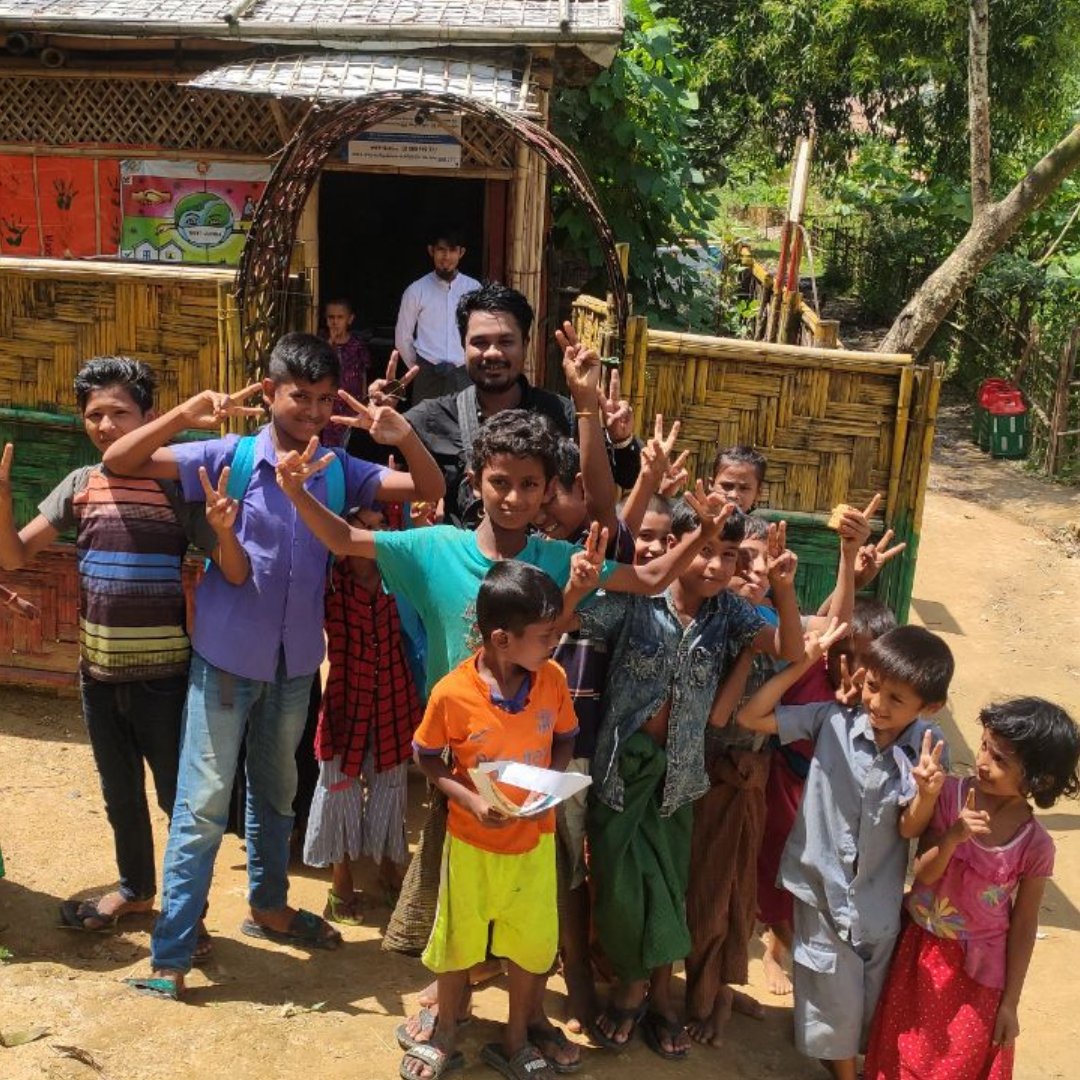You started your career volunteering with Rohingya refugees in Cox’s Bazar which later led to a job with the World Food Programme, how did you begin in this role? In 2017, when the Myanmar army started the inhumane torture of the unarmed and helpless Rohingya people of Arakan, I was moved by the cries of millions who came to this country just to survive. I helped the refugees sheltering on the streets in our area as much as possible. Soon a job came up with the World Food Programme. I started working on a project, which gave me a lot of opportunities to mingle with the Rohingya people, learn their history, and work for them, and I was soon promoted.
Tell us more about your new role, and what it entails? As well as overseeing all the educational materials and stock needed for 5,000 children in our classrooms, my new role is crucial to the running of the digital programme. I deliver projectors and USB drives to teachers so they can deliver their video lessons, then also make sure the projectors are charged and that the USB drives then have the right lessons uploaded for the following day. Tell us a little bit about the impact the digital programme has had in the Kutupalong classrooms? Providing classes with the video projector for the psychological and social development of children is something entirely new that I had never considered before. It is as bright as it is exciting. I've seen many other educational projects but never seen or thought of such a brilliant activity, taking an entire class using a projector like this. What do you like to do when you’re not working? I am passionate about helping children. I want all the children I work with, both inside the camp and out, to be educated and stand on their own feet like I learned to do. In my spare time I help support local children affected by storms, fires and floods.
Support us
0 Comments
Your comment will be posted after it is approved.
Leave a Reply. |
RECEIVE OUR EMAILSBlog Categories
All
Archives
July 2024
|
|
JOIN US ON SOCIAL MEDIA
|
Annual Report | Contact Us | Jobs | Media Centre | Resources | Shop
Accessibility & Policies: Accessibility | Equity, Diversity & Inclusion Policy | Complaints| Privacy Policy | Safeguarding
Accessibility & Policies: Accessibility | Equity, Diversity & Inclusion Policy | Complaints| Privacy Policy | Safeguarding
Children on the Edge, 5 The Victoria, 25 St Pancras, Chichester, West Sussex, PO19 7LT, UK | 01243 538530 | [email protected]






 Give monthly
Give monthly Fundraise for us
Fundraise for us RSS Feed
RSS Feed
